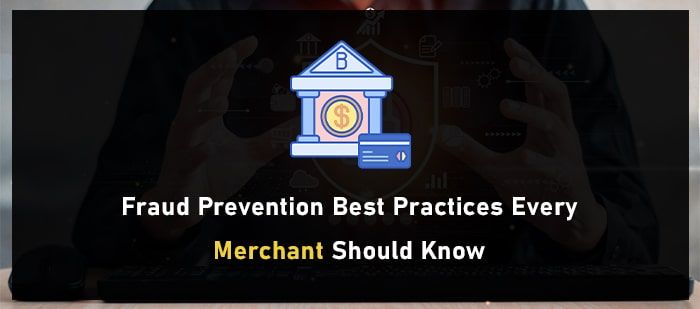
Comprehending Different Types of Fraud
Understanding the various forms of fraud that can impact your business is crucial. Credit card fraud involves criminals using stolen card information to make unauthorized purchases. Identity theft is when someone impersonates another person to access their accounts. Chargeback fraud, also known as friendly fraud, occurs when a customer disputes a legitimate transaction to obtain a refund while keeping the goods or services. Another prevalent type is account takeover, where fraudsters gain unauthorized access to customer accounts to conduct fraudulent transactions.
Each type of fraud presents unique challenges and requires specific strategies for prevention. Credit card fraud can often be mitigated by using advanced verification tools and secure payment gateways. Identity theft prevention involves robust customer authentication processes, such as two-factor authentication and biometric verification.
Chargeback fraud can be addressed by maintaining clear communication with customers and providing detailed transaction records to resolve disputes. Implementing advanced monitoring systems that detect anomalies can help identify account takeovers. For example, sudden changes in account activity or multiple failed login attempts can signal potential fraud.
Employing multi-layered security measures tailored to these different types of fraud can significantly reduce your risk. Using tools like machine learning and artificial intelligence can help identify suspicious activities in real-time, providing an added layer of protection. Additionally, staying informed about the latest fraud tactics and continuously updating your prevention methods can help you stay ahead of fraudsters.
Understanding these types of fraud allows you to implement more targeted and effective prevention strategies. By being vigilant and proactive, you can protect your business and customers from the damaging effects of fraud.
Some Related Blogs
- Why Fraud Prevention is Critical for E-commerce Merchants
- Reducing Fraud with Chargeback Prevention Solutions
- How to Build an Effective Chargeback Prevention Strategy
- Chargeback Prevention: Essential Tips for E-commerce
Establishing Secure Payment Methods
A key aspect of fraud prevention is adopting secure payment gateways, which encrypt sensitive information to protect customer data during transactions. Opt for gateways that comply with the Payment Card Industry Data Security Standard (PCI DSS) to strengthen your security posture.
Another essential practice is implementing tokenization and encryption. Tokenization substitutes sensitive data with unique identifiers, or tokens, making intercepted information useless to cybercriminals. Encryption, on the other hand, encodes data to render it unreadable without the proper decryption key. By incorporating both tokenization and encryption into your payment processes, you can significantly lower the risk of fraud.
Additionally, consider integrating 3D Secure protocols, which add an extra layer of verification during online transactions. This involves a multi-step authentication process where customers must provide additional information, such as a password or a one-time code, to complete their purchase. This extra step can deter unauthorized transactions and protect against fraud.
Using Address Verification Service (AVS) and Card Verification Value (CVV) checks can further enhance security. AVS compares the billing address provided by the customer with the address on file with the card issuer, while CVV checks verify the three-digit number on the back of the card. These checks can help identify and prevent fraudulent transactions.
Monitoring transactions for irregular patterns can also help detect fraud early. Look for signs such as multiple high-value purchases within a short period or transactions from unusual locations. Automated systems that flag suspicious activities can facilitate quick responses and prevent potential fraud.
By incorporating these secure payment methods, you can protect both your business and your customers from fraudulent activities. Adopting these practices will help ensure the safety and integrity of your transactions.
Routine Monitoring and Evaluation
Routine monitoring and evaluation are essential for keeping your fraud prevention measures effective and up-to-date. Frequent audits help ensure that your security systems and processes meet industry standards and can highlight areas that need improvement. Regular reviews can also identify new vulnerabilities that may have arisen, allowing you to address them promptly.
![]()
Email us anytime!
Email customer service 24/7
![]()
Call us anytime!
Reach customer care 24/7 at +1 (888) 901-8653
Analyzing transaction data for irregular patterns is another crucial aspect. Look for red flags such as an unusual number of high-value transactions within a short period, purchases from the same IP address, or transactions from locations that deviate from typical customer behavior. Automated systems can aid in this process by flagging suspicious activities, enabling quicker responses.
Using data analytics and machine learning algorithms can further enhance your monitoring efforts. These technologies can identify subtle patterns and anomalies that may not be immediately obvious, giving you a more comprehensive view of potential threats. Implementing real-time monitoring tools can provide immediate alerts for any suspicious activity, allowing you to act swiftly to mitigate risks.
It’s also beneficial to regularly update your fraud detection rules and criteria. As fraud tactics evolve, so should your preventive measures. Staying informed about the latest trends in fraud and adjusting your strategies accordingly can help you stay one step ahead of cybercriminals.
Incorporating feedback from your team into your monitoring processes can offer valuable insights. Your employees may notice patterns or behaviors that automated systems miss, making their input invaluable. Establishing clear protocols for reporting suspicious activities can ensure that potential threats are addressed promptly.
Staff Education and Awareness
Staff education is vital for safeguarding your business against fraud. Training sessions on fraud detection can help employees recognize phishing attempts and suspicious behaviors. Workshops and seminars keep the team updated on current fraud trends and prevention techniques, fostering a proactive approach.
Encourage an open communication culture where staff feels comfortable reporting any concerns or suspicious activities. This can lead to quicker identification and resolution of potential threats. Role-playing scenarios can also be an effective way to prepare employees for real-life fraud situations, making them more confident in their ability to act.
In addition to training, providing resources like guides or checklists can serve as handy references for staff, reinforcing their learning and awareness. Regular updates on new fraud tactics and preventive measures ensure that your team remains informed and vigilant.
By investing in staff education and fostering a culture of awareness, you create a robust frontline defense against fraud. This not only helps in identifying and preventing fraud but also boosts overall organizational security, allowing your business to thrive.


